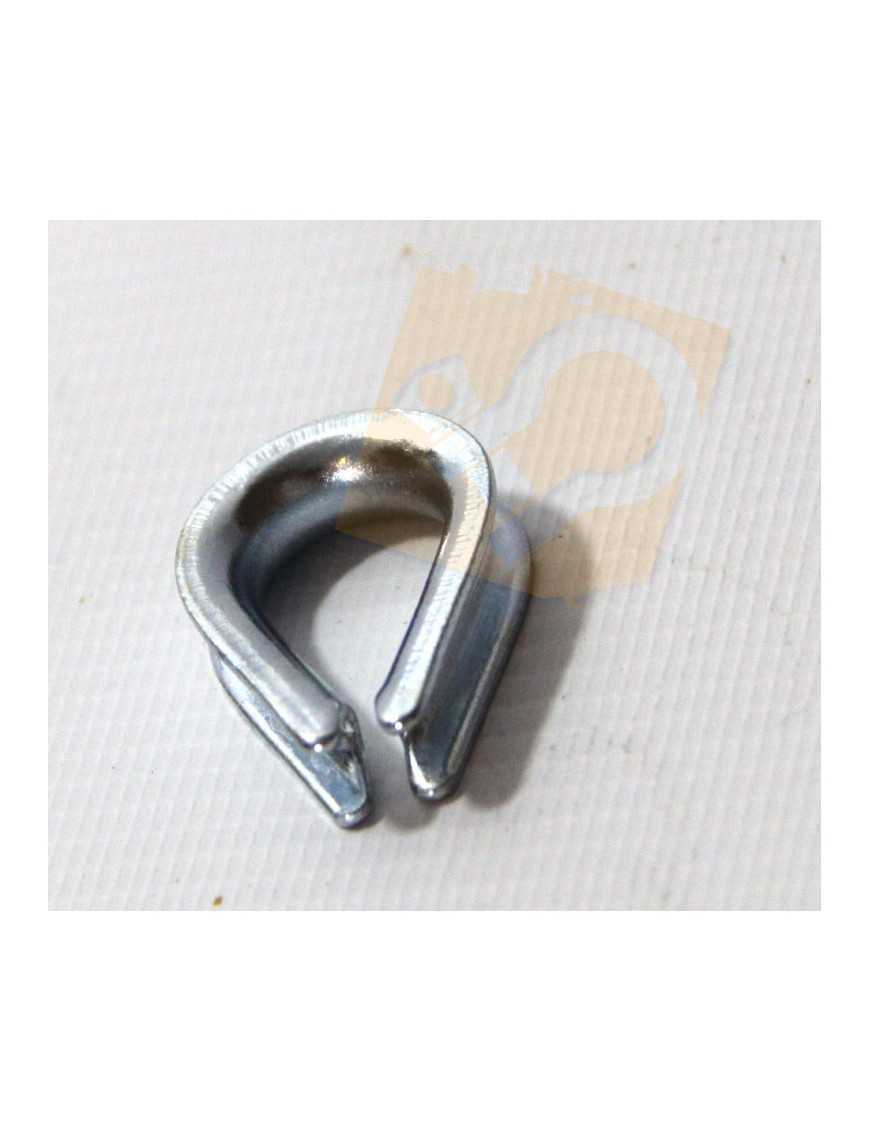

Thimble for winch rope 5 DIN6899B
Log in as a company by purchasing without 23% VAT - applies to companies outside Poland

The thimble is placed in the loop made of rope at its end. It protects the rope from abrasion and, in the case of stiff ropes, also from excessive crushing by giving this loop the desired shape. It is suitable for both metal and plastic or plant ropes. The thimble has a groove along its entire length, into which the rope enters about 2/3 of its diameter. The rope can surround the thimble and be tightened, upon return, to the rest of the rope, or the thimble can be woven into the rope. Putting on and taking off the thimbles is extremely easy and fast.

Steel rope has long been the standard choice for winches. Made from multiple strands of carbon steel wire, it offers excellent resistance to abrasion and generally comes at a lower cost than synthetic alternatives. Its main drawback is the tendency for individual wires to break over time, creating sharp burrs – meaning gloves are essential for safe handling.
Synthetic ropes, introduced to the market much later, are dramatically lighter – often up to ten times lighter than steel. Despite the lower weight, they can be incredibly strong, with some models offering breaking strengths up to seven times higher than comparable steel ropes. An often-overlooked advantage is that synthetic rope floats on water, making it extremely useful during river crossings and wet off-road conditions.
Unlike steel, synthetic rope doesn’t snap violently. It’s more flexible, and if damaged, it can be repaired in the field simply by tying a knot. This makes it a much safer option to use. On the downside, synthetic ropes cost more and are more susceptible to abrasion. However, for those willing to invest, they offer unmatched convenience and performance in challenging terrain.
The answer is simple – the fewer wraps on the drum, the more pulling power the winch can deliver. The exact amount of rope you can fit depends on the drum size. For example, a standard 12,000 lbs winch can typically hold about 28 m of 10 mm cable, or around 25 m if you go up to 12 mm. With these lengths, you need to pay close attention to how the rope is spooled to avoid pushing apart the crossbars that support the winch’s legs.